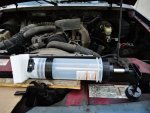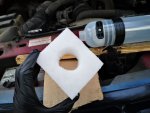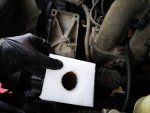tekkatekka
New Member
- Joined
- Jul 17, 2013
- Messages
- 24
- Reaction score
- 5
- Points
- 3
- Vehicle Year
- 1991
- Make / Model
- ford ranger
- Transmission
- Manual
I have 1991 Ranger, 4x4, 4.0 engine. I removed the gear box and power steering pump. About to install rebuilt pump and gearbox and new lines.
What do I need to do about the ATF fluid. Do I need to add any to the gearbox before installing or the pump. What to do to bleed it after install? Thanks for any help.
What do I need to do about the ATF fluid. Do I need to add any to the gearbox before installing or the pump. What to do to bleed it after install? Thanks for any help.

















